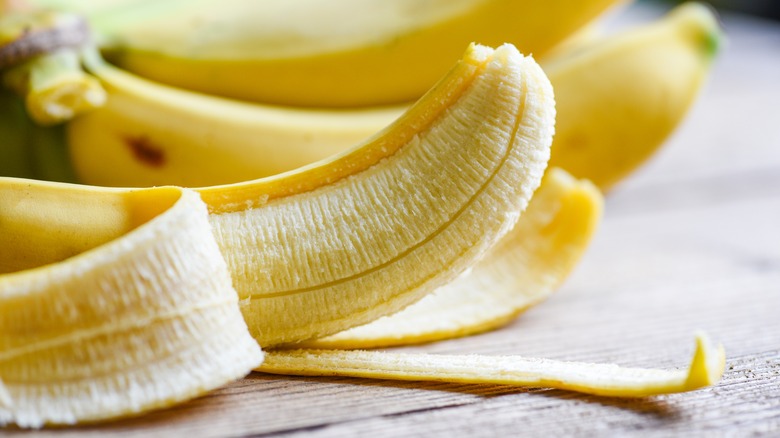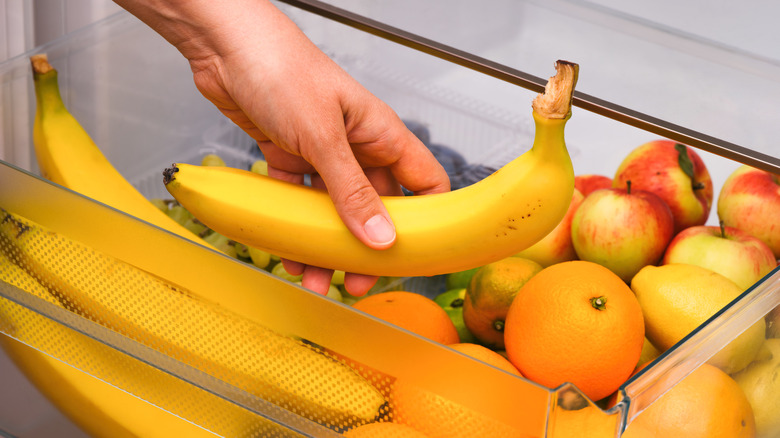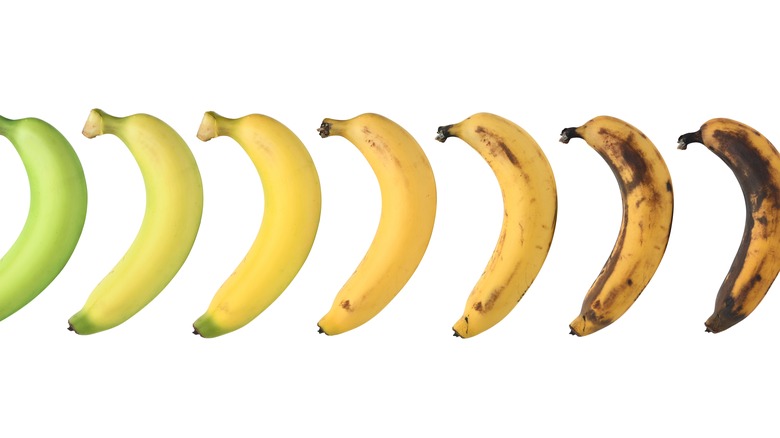The Best Way To Store Bananas Isn't In A Fruit Bowl
As delicious as they are, bananas are not the easiest thing in the world to keep the freshest. Bruising, rotting, and softening are just a few of the harsh realities that could set in within days of purchasing these ever-present fruits. Proper storage when it comes to your produce is key, but with so many unique varieties of items falling under that category, it can be tough to keep track of what should be stored where. Many believe a classic fruit bowl to be not only an iconic image of Americana, but also an adequate place to store their bananas once they're home from the store. However, this simply isn't the case. Bananas might be fine on the counter for a day or two, but once they hit ripeness, a more controlled environment is far more ideal for freshness.
Though it's unfortunately impossible to completely prevent the average banana from succumbing to its own mortality, there are some ways to keep your fruit fresh. And, as luck would have it, you won't even need to completely get rid of your fruit dish, but hopefully after this you'll only use it as just one aspect of storing your precious produce. Who are we to mess with tradition?
Once ripe, bananas belong in the fridge
While bananas are approaching their ripened state, it is wisest to keep them in the open air of a cool kitchen. However, once peak ripeness has been achieved, any further room-temperature storage could lead to premature browning, and worse, the possible onslaught of unwanted fruit flies. When your bananas are ripe to your liking, it's best to relocate them into the refrigerator, where their temperature will be regulated and spoilage will set in at a slower rate. You can also keep them in the freezer, if you're angling to keep the bananas for a much later date, however, freezing whole bananas does run certain risks.
When freezing bananas, it's best to have a plan of what you're going to use them for in the future. If you're keeping them to use in smoothies, be sure to slice them before putting them into the chill, ideally in a freezer-safe Ziploc. Otherwise, if the plan is to make banana bread or any other baked good with your leftover bananas, it's alright to freeze them whole. Then, when the day comes to whip up a loaf, thaw them enough to peel and mash away!
How to keep bananas their yellowest
One of the most notable aspects of the humble banana is its bold yellow hue. At peak ripeness, a banana display can be seen clear across the supermarket — but is there any way to keep that yellow coloring as long as possible? Luckily, with a bit of help from our old pal plastic, there is. The rapidity of browning in bananas is largely due to the ethylene gas stored in the banana bunches' stems, and is what spreads to the rest of the fruit to cause the color change. By affixing a little everyday cling-wrap to the stems, the gas is prevented from being released and will keep your bananas looking store-ready for far longer than without.
So, despite their fragile inner ecosystem, bananas can be kept a great while longer with just a few knowing storage tactics. Not only can a perfectly ripe banana bring a delicious aspect to your breakfast or dessert, but with the proper care, they can look pitch-perfect for any kitchen photoshoots you may be cooking up. Just be sure to make sure the peels end up in the proper waste receptacle where they belong, and not on the floor where they can be slipped on and made into footage ready for unwanted viral fame.


